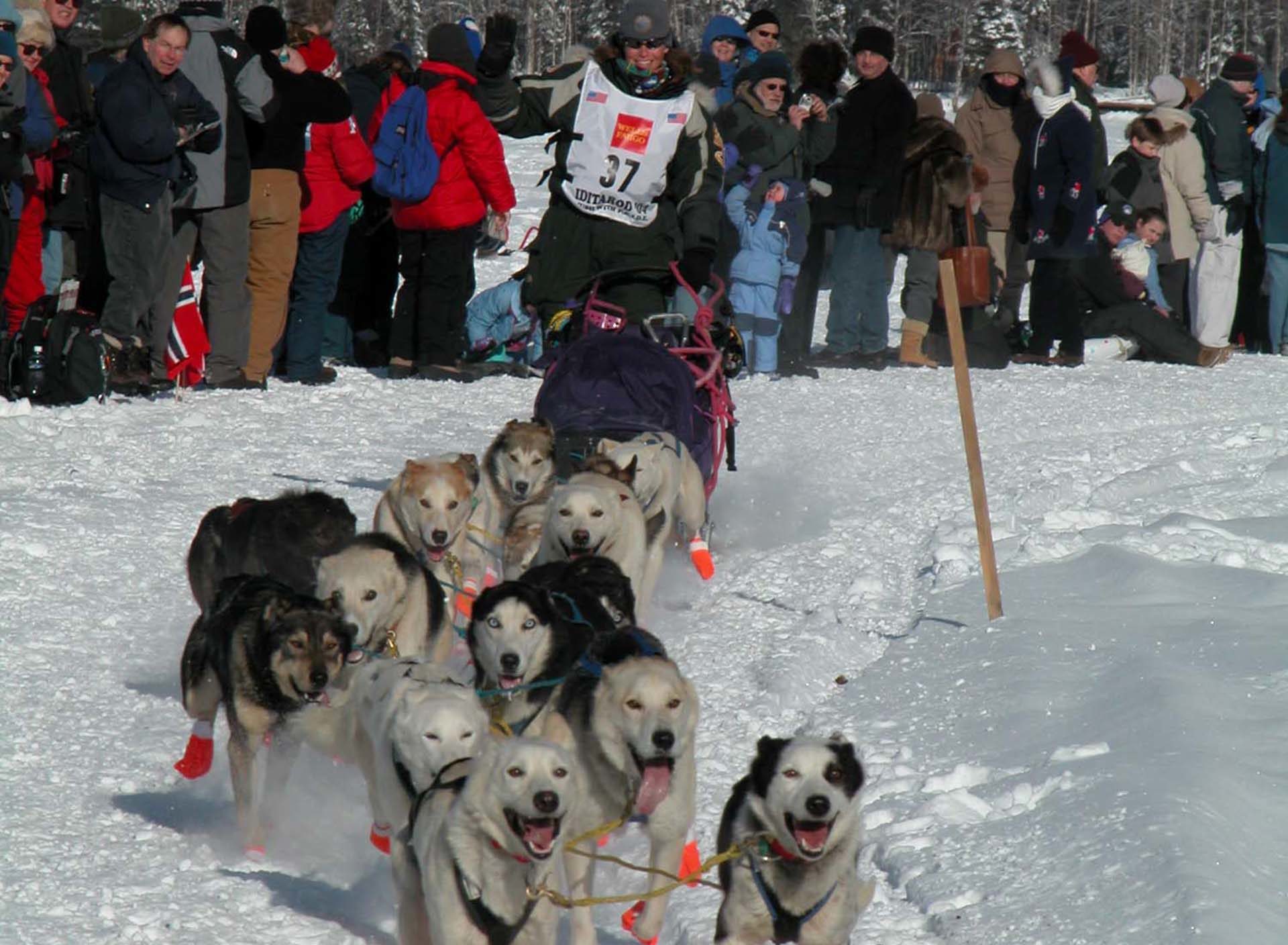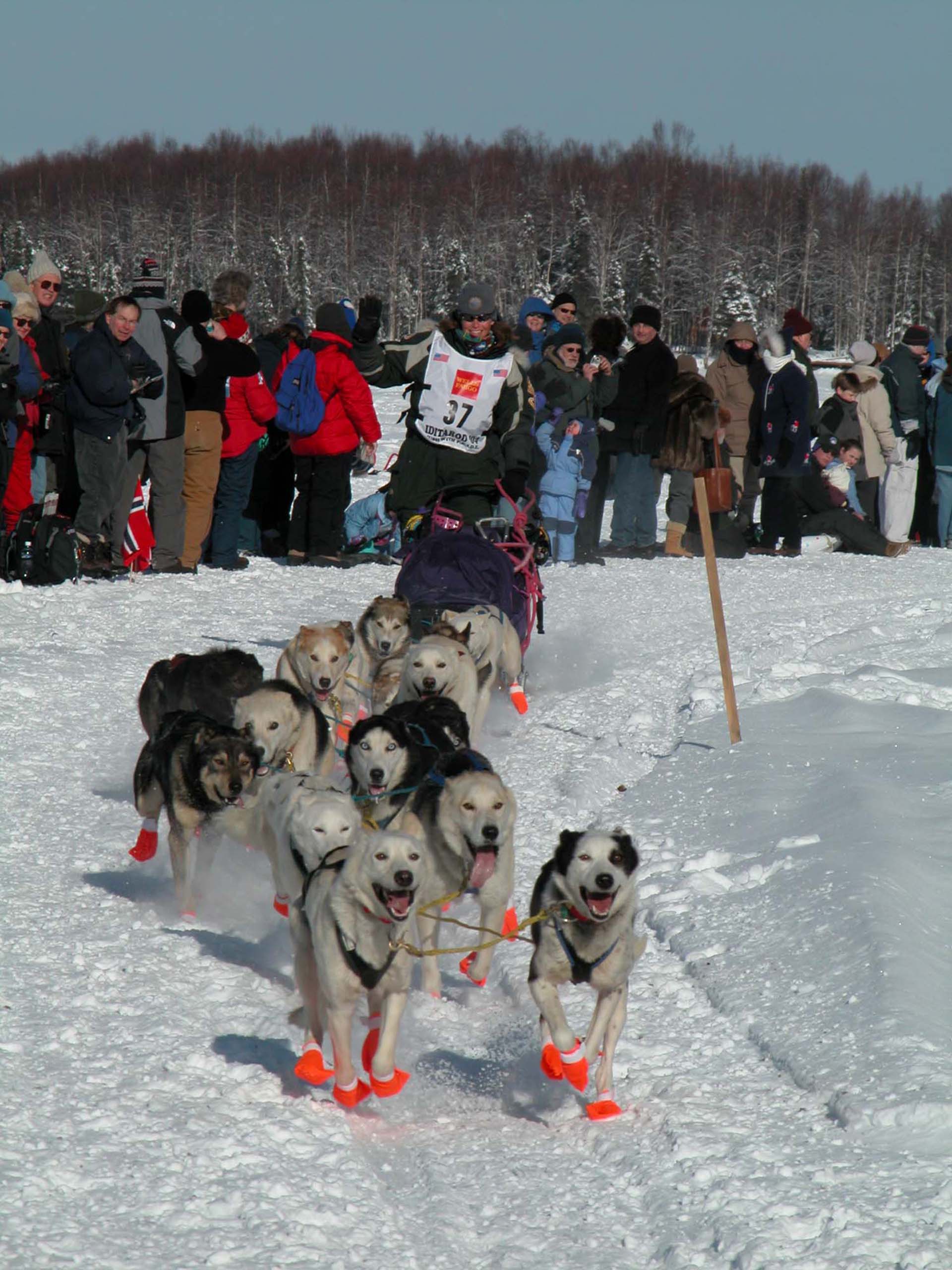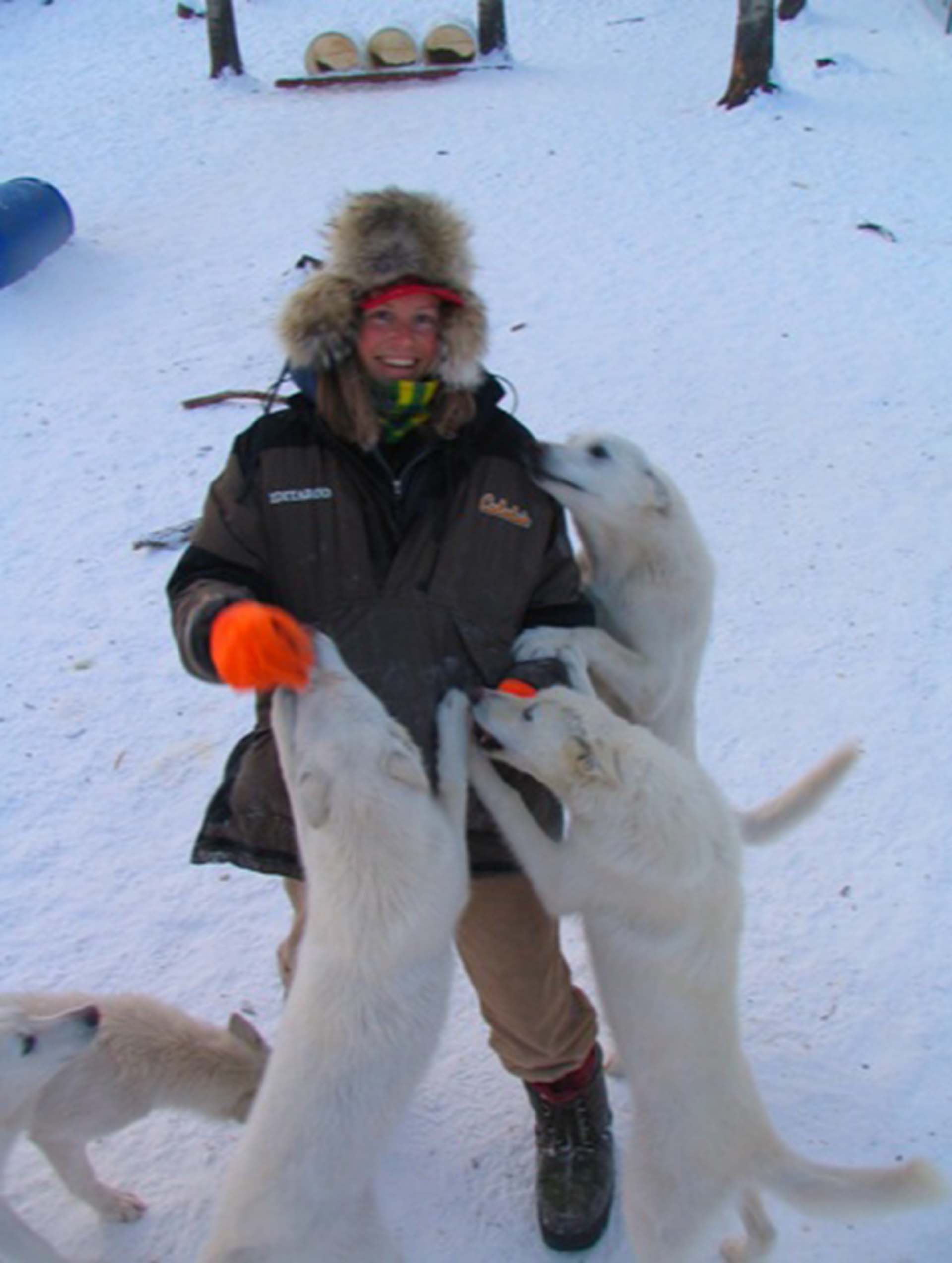Iditarod Veteran To Share Trail Tales


One might think that with the arrival of April and its spring showers, the long-distance Iditarod dogsled race in Alaska would be far from most people’s minds.
But on April 13, Karen Land, a three-time veteran of the famous Anchorage-to-Nome race, hopes people will be thinking snow when she recounts her experiences on the trail in a family program starting at 1 PM at the Hampton Library in Bridgehampton.
Land, who was born and raised in Indiana before attending the University of Montana, was introduced to the sport in the late 1990s when she took part in a post-graduate film program in Maine and made a documentary that followed a local musher through a series of regional races as he tried to qualify for the Iditarod.
“By the end of that semester, I was hooked,” Land said. She moved to Alaska and found a job with a musher, helping to raise and train dogs for his team. She later returned to Montana, where she worked with another musher before she put together her own team and made her first Iditarod run in 2002.
Riding a sled behind what’s called “a string” of 14 dogs, Land finished a respectable 49th out of 65 competitors that year, completing the approximately 1150-mile course in just under 14 days. She returned with high hopes of improving her time in 2003, but her entire team of dogs came down with a stomach virus at the start of the race.

“You are allowed one 24-hour break, and most people take it at the midpoint,” Land said. “I was super aware the dogs were not having a good time, so I took my 24-hour break after the first day, hoping they’d get over the flu bug.” When they failed to improve, she was forced to drop out of the race.
She ran her third and final Iditarod the following year when she finished 56th among a field of 89 entrants, completing the event in about 12-and-a-half days.
When she speaks in Bridgehampton, Land will bring along her sled and her dog, Noggin, a seven-year-old mixed breed that looks more like one of the dogs up for adoption at ARF than the kind of dog — a Siberian husky, for instance — central casting would send over to play the role of lead sled dog.
“The Alaskan husky is a mixed breed for long-distance running,” Land said. “They are true mutts in the best sense of the word.”
Sled dogs typically weigh only about 50 pounds. “They’re super lean,” Land added. “They are the ultimate endurance athletes. They run 100-plus miles a day” and can burn up to 10,000 calories doing,” she said.
Mushers run with 14 dogs and carry enough provisions to hold them over to the next check-in point. At night, the musher will typically camp out on the sled, while the dogs bed down in the snow or on straw the musher carries along.
Grizzly bears are still hibernating during the Iditarod, and wolves tend to keep their distance from a pack of dogs. But moose and bison encountered on a narrow trail can pose both an inconvenience and a danger.
Global warming can also have an impact. Four years ago, a lack of snow required organizers to truck in snow that was dumped in the street for the ceremonial start in Anchorage, and sometimes the rivers and lakes the trail would normally follow are not safe, requiring time-consuming detours.
A writer and outdoors advocate, Land has given talks about the Iditarod since before she ran her initial race. She was back home in Indiana attending a fundraiser for her rookie run when she was approached by an elementary school teacher who asked her to speak to her class.
sjkotz@indyeastend.com



